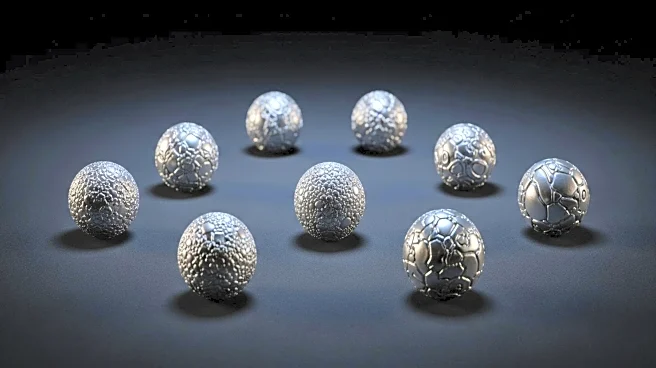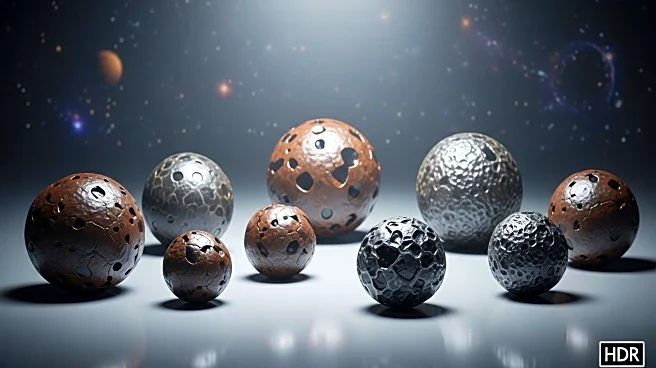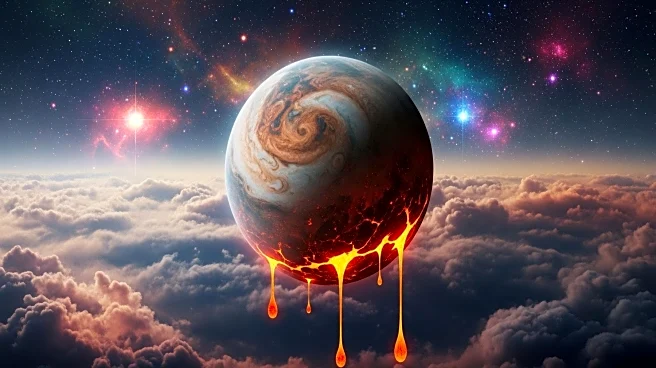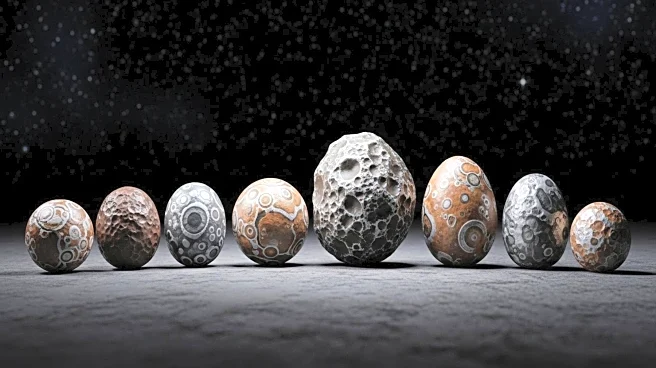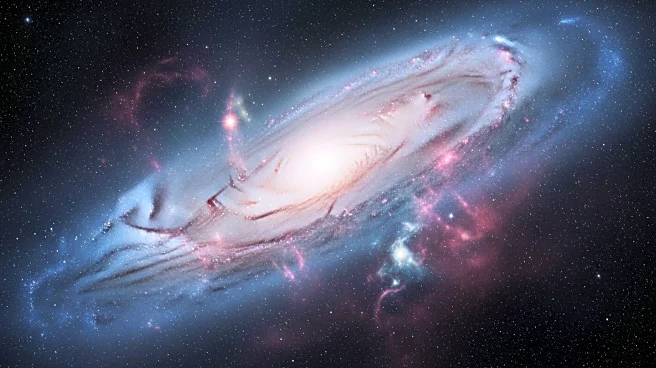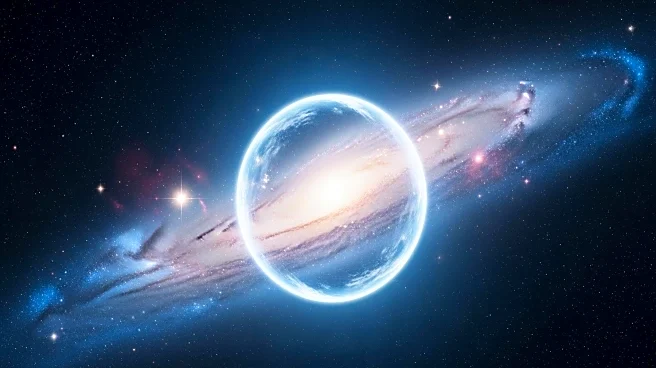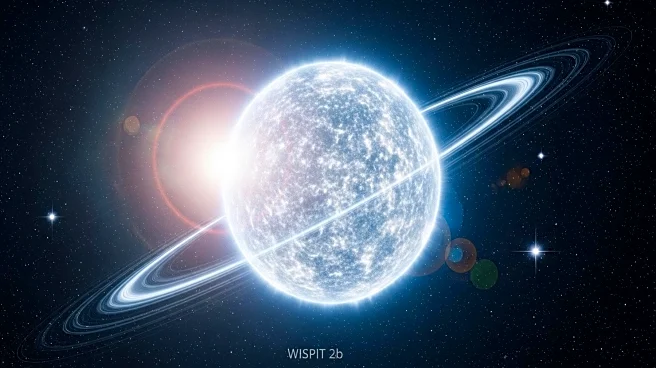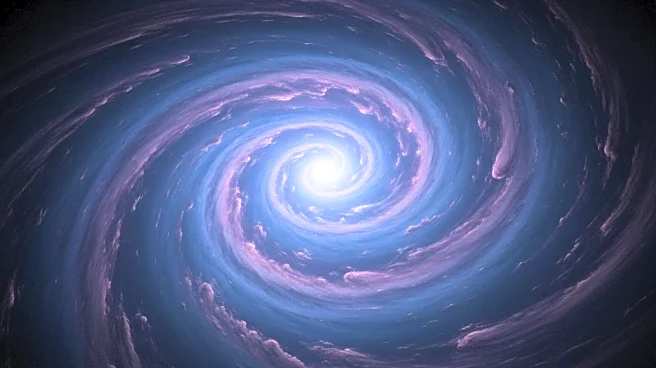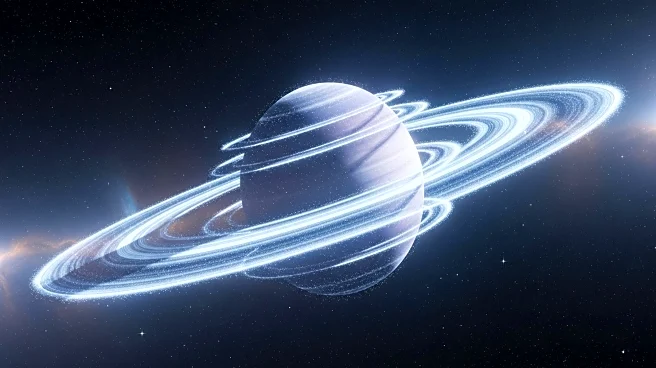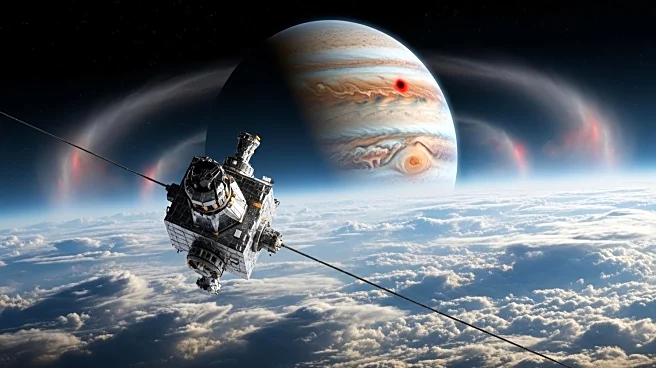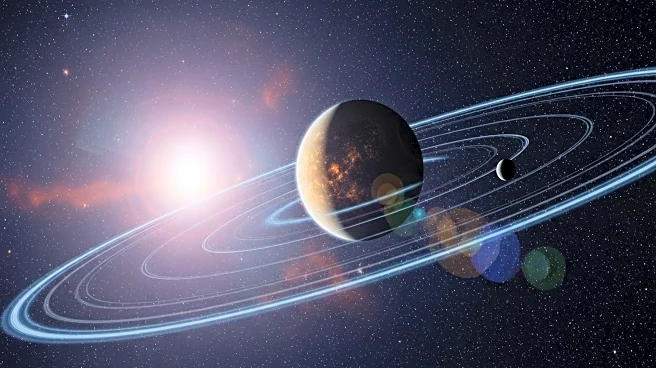What's Happening?
Researchers from Nagoya University and the Italian National Institute for Astrophysics have used meteorite chondrules to determine Jupiter's age. Chondrules are small spherical droplets of molten rock found in meteorites, and their formation has been linked to high-speed collisions of planetesimals in the early solar system. The study suggests that Jupiter's gravity played a crucial role in these collisions, leading to the creation of chondrules. By simulating Jupiter's early growth, researchers have dated its formation to approximately 4.6 billion years ago, coinciding with the peak period of chondrule formation.
Why It's Important?
This research provides a more precise timeline for Jupiter's formation, enhancing our understanding of the early solar system's dynamics. Knowing Jupiter's age helps scientists piece together the sequence of events that led to the formation of other planets and celestial bodies. The study also highlights the influence of giant planets like Jupiter on the distribution and characteristics of smaller bodies in the solar system. This knowledge is essential for developing models of planetary formation and evolution, which can be applied to other star systems.
What's Next?
Further research will explore the formation of other chondrules with different ages, potentially linked to the formation of other planets like Saturn. This ongoing investigation will continue to refine our understanding of the processes that shaped the solar system. Additionally, the study of chondrules may provide insights into the conditions necessary for planet formation, influencing future astronomical research and exploration missions.
